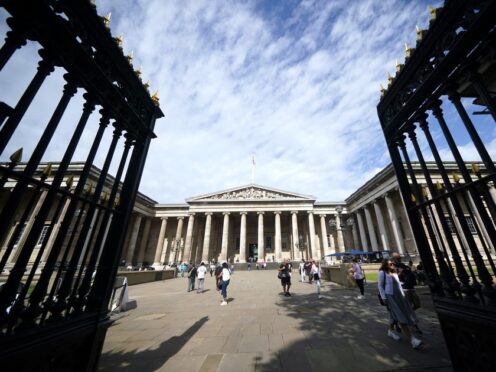The number of visits to tourism attractions is still below pre-pandemic levels as many people remain “out of the habit” of going to them, according to new research.
There were 146.6 million visits to major UK venues in 2023, down 11% from 163.9 million in 2019 before the virus crisis, according to trade body the Association of Leading Visitor Attractions (Alva).
Bernard Donoghue, Alva director, said attractions are “recovering well” – with the 2023 total representing a 19% increase from the previous 12 months – but warned “they’re still not back to full recovery”.

He told the PA news agency this is partly down to people who “got out of the habit of going to museums and galleries” when they were closed during coronavirus lockdowns.
These people may still be “anxious” about the virus while the cost-of-living crisis is also having an effect as many potential visitors are making “tactical judgments about how they spend their leisure pounds”, he said.
Mr Donoghue said attractions are putting on “a great programme of events” and offering cut-price tickets to encourage people to return.
He stated that the limited return of Chinese tourists due to the country’s coronavirus travel restrictions is also affecting overall visitor numbers to UK tourism hotspots.
“They’re starting to come back now that they’re travelling out of China, and we hope that they’ll be back up to pre-Covid levels by the end of next year,” he said.
Mr Donoghue claimed that the Government’s failure to reverse its 2020 decision to end tax-free shopping for inbound visitors has led to a “significant decrease” in spending in attraction gift shops by overseas tourists.

“We are absolutely missing out on expensive items being bought by visitors from around the world, particularly from America, the Middle East and the Far East,” he said.
“We know that we’re losing out to places like Paris, Milan, Madrid and Rome.”
The British Museum, in central London, was the UK’s popular tourist attraction last year with 5.8 million visits, up 42% from a year earlier.
This was partly attributed to the success of its China’s Hidden Century exhibition, which ran from May until October.
The second most-visited attraction was the Natural History Museum, west London, which had its best year for visits at 5.7 million.
In third place was Windsor Great Park, Berkshire, with 5.5 million visits.
The most popular attraction in Scotland was Edinburgh’s National Museum of Scotland (2.2 million visits) while the number one spot in Wales was taken by St Fagans National Museum of History in Cardiff (600,000 visits).
Titanic Belfast had the most visits out of Northern Ireland’s attractions, with 800,000.
